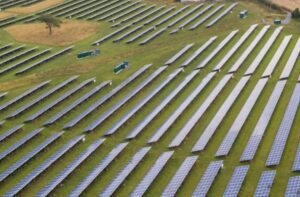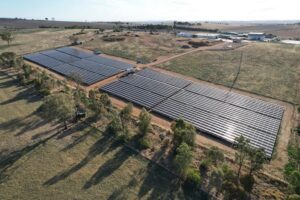A major US study has thrown new light onto just what impact power utilities can have on the development of rooftop solar, suggesting that changes in fixed charges and feed-in tariffs could cut solar deployment by as much as 80 per cent.
The study, from the highly respected Lawrence Berkeley National Laboratory, also casts doubt on the so-called “duck curve”, the change in load profile caused by rooftop solar that has led some incumbents to allege that rooftop solar is “free riding” on the grid.
The study is focused on the US market, which has a different tariff structure than Australia. But the lessons are comparable, because Australia is already experiencing a fall in rooftop solar deployment as utilities dramatically lift the scale of network charges, and feed-in tariffs are slashed or cut to zero, while metering charges are also increased.
The US residential rooftop solar market has been relatively slow to take off, but Lawrence Berkeley says that there could be 175GW of rooftop solar in the country by 2050 – that compares to forecasts of 37GW of rooftop solar in Australia (with less than one tenth the population) by 2035.
 But even this modest forecast for the US could be severely curtailed if the portion of fixed charges was increased, or the rate of pay (the feed-in tariff) for rooftop solar exports back into the grid was curtailed.
But even this modest forecast for the US could be severely curtailed if the portion of fixed charges was increased, or the rate of pay (the feed-in tariff) for rooftop solar exports back into the grid was curtailed.
This graph (right) shows the extent to which that could happen. If fixed charges were increased to $50/month, for instance, that could cut installations by around 60 per cent. If the feed-in tariff was slashed to 7c/kWh, that could cut deployment by 80 per cent.
The US currently enjoys low fixed charges and “net feed-in tariffs’, which mean that households get paid the same rate for exports of solar electricity as they do for normal grid power. The US, generally, pay a lot less for electricity than Australians, with the exception of Hawaii (which is now pushing to 100 per cent renewables), and parts of California – which has a 50 per cent target by 2030.
“Our results demonstrate that future adoption of distributed PV is highly sensitive to retail rate structures,” the Lawrence Berkeley authors say.
“Whereas flat, time-invariant rates with net metering would lead to higher deployment levels, moving towards time-varying rates, rate structures with higher monthly fixed customer charges, or compensation at prices lower than the full retail rate can dramatically slow long-term customer adoption of PV.”
The most dramatic impact could be in changes to tariffs. Most US states, despite intense lobbying by incumbent utilities, retain the “net metering” concept. While utilities have argued that the value of rooftop solar is much lower, some studies suggest it is higher. A report commissioned by the regulator in Maine suggests the value of rooftop solar might be three times the value of grid power, when incorporating environmental impacts and other factors.
 In Australia, rooftop solar is valued by the regulator at less than one-quarter of the grid price. In some states, it has no value at all, with any feed-in tariff being branded as “voluntary” for the retailers. In Queensland, the networks are allowed to stop solar households from sending electricity back into the grid.
In Australia, rooftop solar is valued by the regulator at less than one-quarter of the grid price. In some states, it has no value at all, with any feed-in tariff being branded as “voluntary” for the retailers. In Queensland, the networks are allowed to stop solar households from sending electricity back into the grid.
The Lawrence Berkeley study says that changes to tariffs in the US could have a dramatic impact on the uptake of rooftop solar, simply by making the returns less attractive. A higher feed-in tariff – such as those proposed by the study in Maine – would increase the uptake.
The next graph is also interesting, showing the impact of higher fixed charges – the classic response of utilities in the face of what they call the “death spiral”, and their fear that they will have to recoup revenues from a declining customer base.
This graph shows that  the impact on projected rooftop solar demand of a $10 a month fixed charge and a $50 a month fixed charge.
the impact on projected rooftop solar demand of a $10 a month fixed charge and a $50 a month fixed charge.
The latter is particularly damaging. Yet that is exactly what consumers in Australia are facing. In NSW and Queensland, the fixed charges are being increased to nearly $450 a year. For low energy users, such as pensioners and single households, that could amount to nearly 50 per cent of the total bill. In turn, that makes the returns on rooftop solar much less attractive.
For business consumers, the level of fixed charges is increasing dramatically, both in Queensland and in South Australia, where the volume component of the network part of the bill has been reduced to just 3.3c/kWh.
The Lawrence Berkley study does not include the potential impact of battery storage, but in Australia there is a strong view that while tariff changes might make solar-only installations less attractive, it will make solar plus battery storage installations more attractive.
The danger for the networks, then, is to what extent the costs of those technologies falls to the point where solar plus storage can make sense with no connection to the grid. For some it already does. When that equation reaches the mass market, then the grid will have to find an answer to its big problem – it is terribly overpriced.
As for the so-called solar feedbacks into the grid, the study is dismissive. It notes that some suggest that retail electricity prices might be jacked up as fixed utility infrastructure costs are spread over a shrinking base of electricity sales, thereby further increasing PV deployment.
But they argue that this commonly noted feedback effect is mitigated by another, less-recognised feedback effect between solar deployment and the timing of peak electricity prices, which reduces bill savings for solar customers on time-varying rates.
“Currently, solar generation coincides reasonably well with peak wholesale electricity prices in many regions, but as solar generation increases, peak price periods are likely to shift to later in the day.
“Our results indicate that, at an aggregate national level, the two feedback effects nearly offset one another and therefore produce a modest net effect. Their magnitude and direction can vary by rate design and by state, however, highlighting the importance of understanding these effects at the regional level and for different customer groups.”
This has already occurred in Australia, with the demand peaks pushed from mid afternoon to the early evening. Rate design is also changing, supposedly towards “cost reflective” tariffs that recognise the impact, and benefit, of rooftop solar on the grid. But as the APVI, and others, have noted, some of these tariffs are not cost reflective at all, because peak pricing is based on individual households peaks and not network peaks. Because of that, they are simply another grab for revenue.








